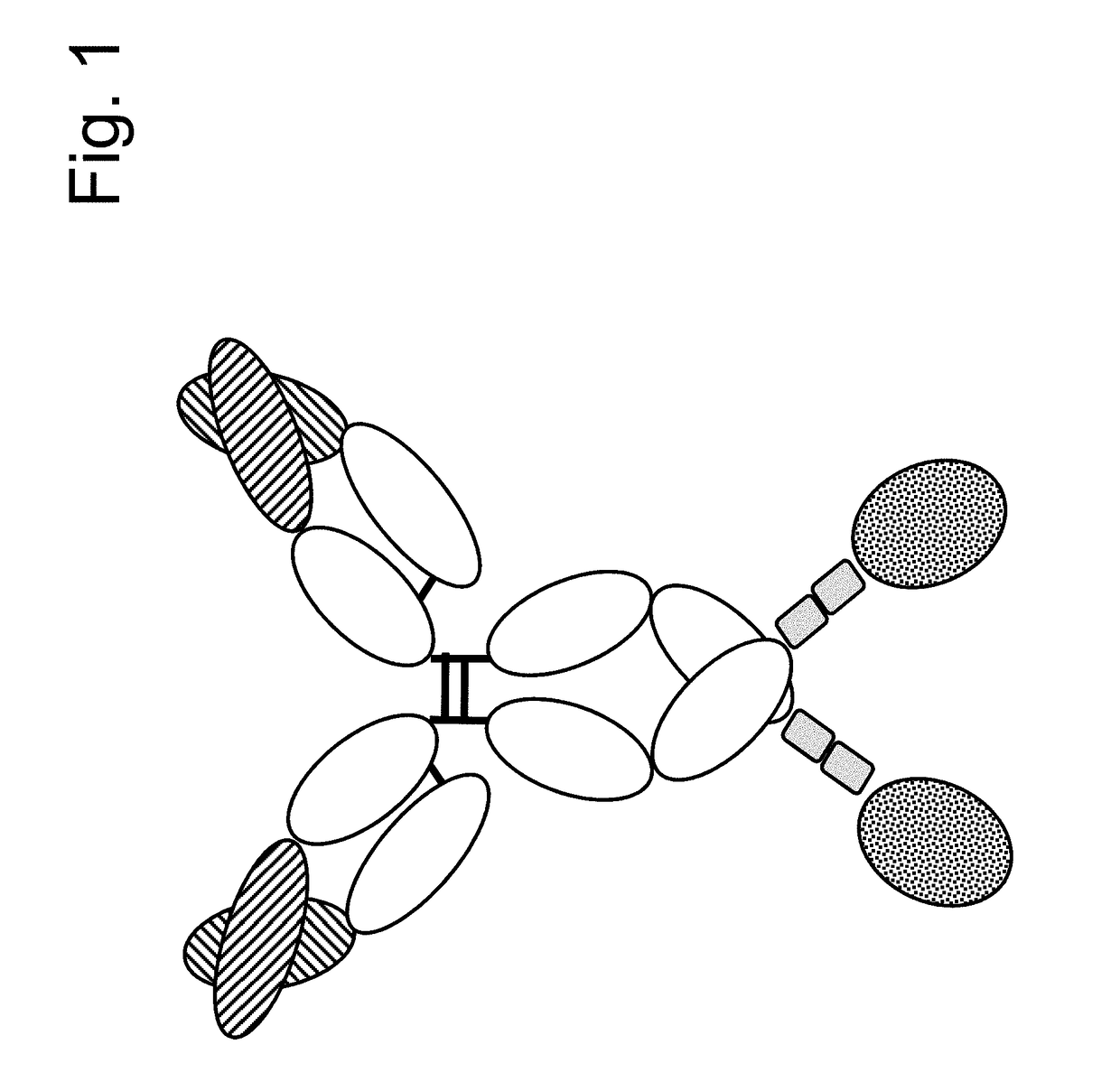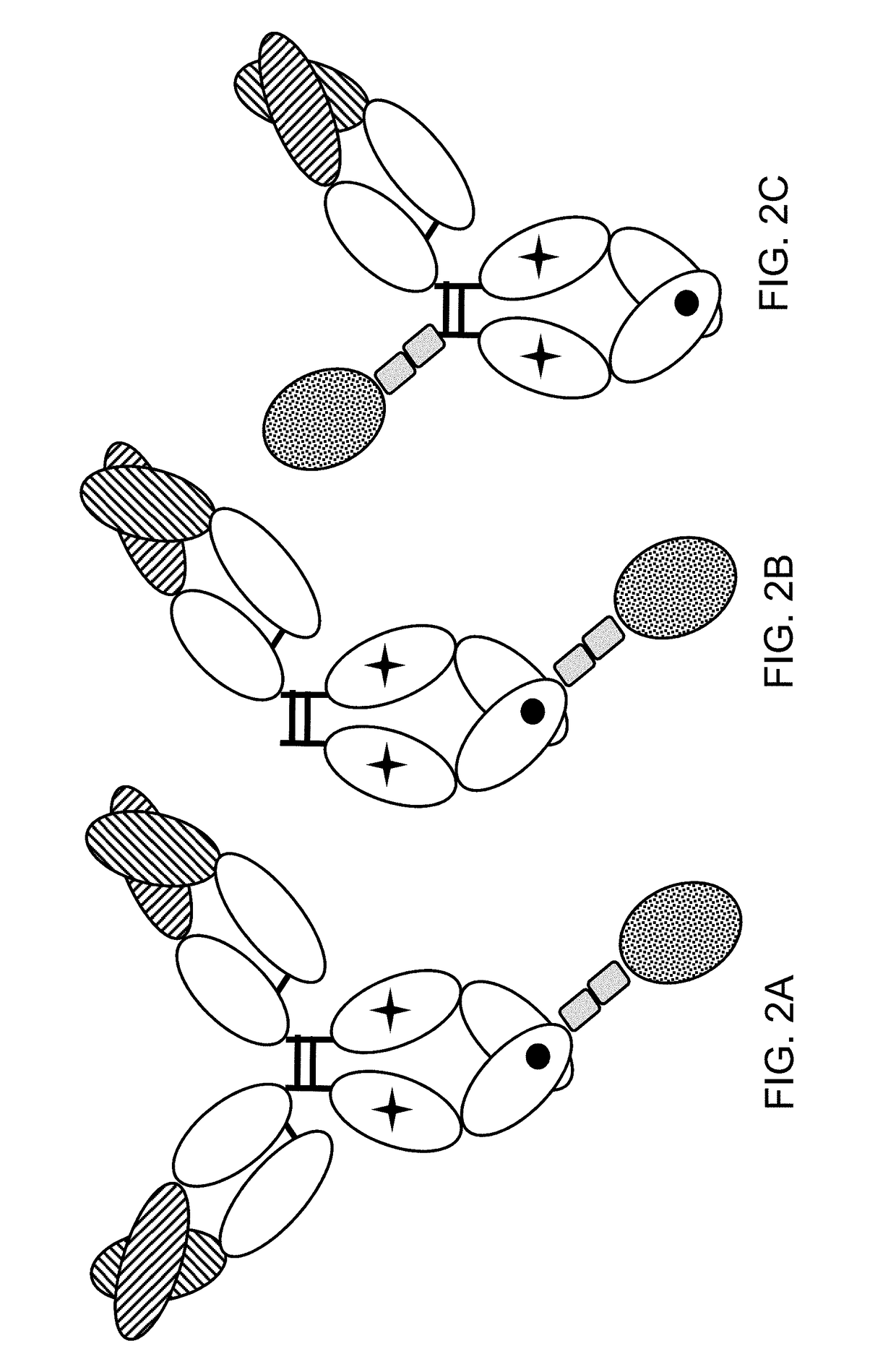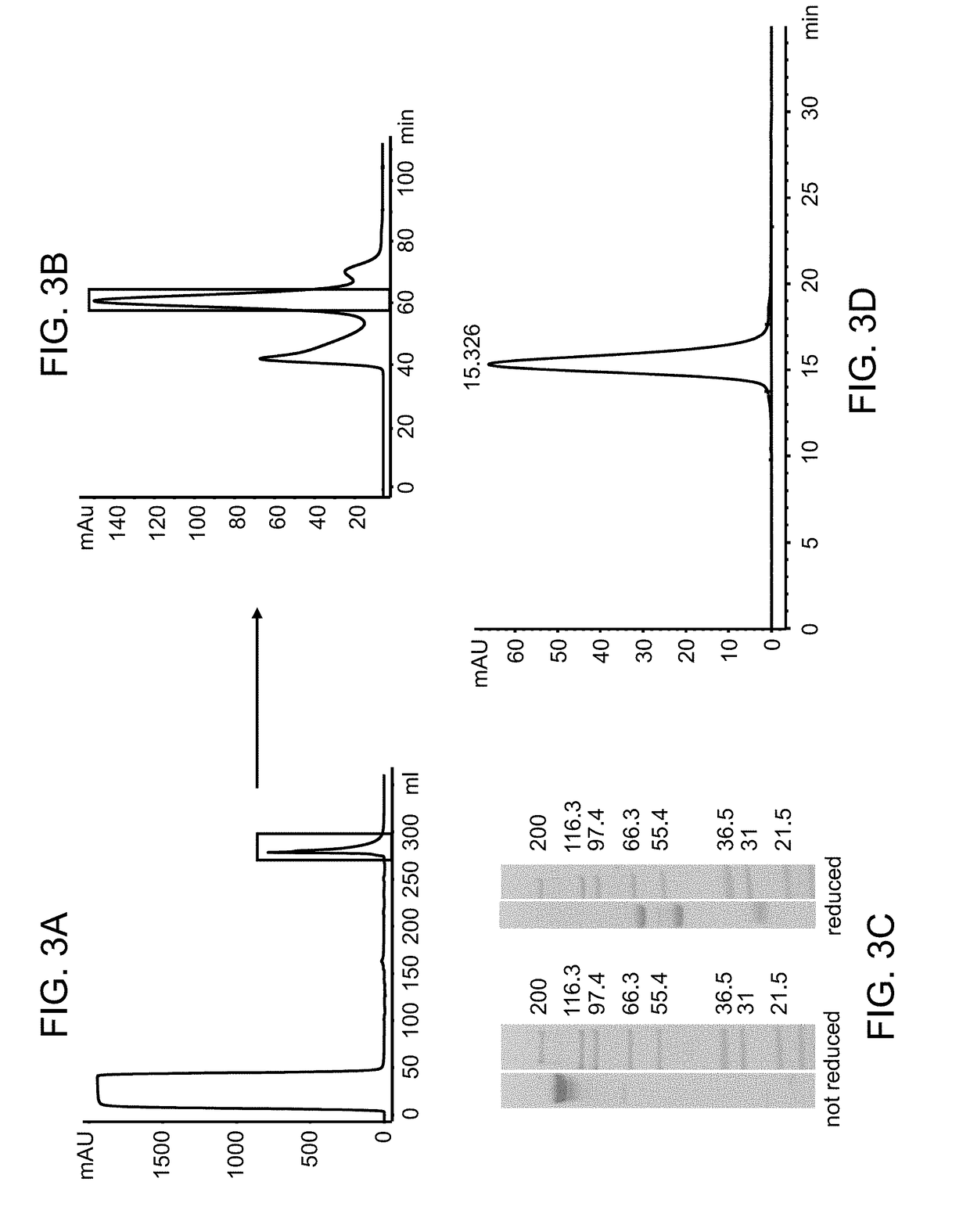Immunoconjugates
a technology of immunoconjugates and antigens, applied in the field of antigen-specific immunoconjugates, can solve the problems of lack of tumor specificity, severe toxicity and adverse reactions, and rapid blood clearance, and achieve the effects of reducing binding and/or effector function, prolonging the half-life of immunoconjugates, and eliminating effector functions
- Summary
- Abstract
- Description
- Claims
- Application Information
AI Technical Summary
Benefits of technology
Problems solved by technology
Method used
Image
Examples
example 1
[0307]General Methods
[0308]Recombinant DNA Techniques
[0309]Standard methods were used to manipulate DNA as described in Sambrook et al., Molecular cloning: A laboratory manual; Cold Spring Harbor Laboratory Press, Cold Spring Harbor, N.Y., 1989. The molecular biological reagents were used according to the manufacturer's instructions. General information regarding the nucleotide sequences of human immunoglobulins light and heavy chains is given in: Kabat, E. A. et al., (1991) Sequences of Proteins of Immunological Interest, Fifth Ed., NIH Publication No 91-3242.
[0310]DNA Sequencing
[0311]DNA sequences were determined by double strand sequencing.
[0312]Gene Synthesis
[0313]Desired gene segments where required were either generated by PCR using appropriate templates or were synthesized by Geneart AG (Regensburg, Germany) from synthetic oligonucleotides and PCR products by automated gene synthesis. In cases where no exact gene sequence was available, oligonucleotide primers were designed b...
example 2
[0326]FAP-targeted IgG-IL-2 qm fusion proteins were generated based on the FAP-antibodies 4G8, 28H1 and 4B9, wherein one single IL-2 quadruple mutant (qm) was fused to the C-terminus of one heterodimeric heavy chain as shown in FIG. 2A. Targeting to the tumor stroma where FAP is selectively expressed is achieved via the bivalent antibody Fab region (avidity effect). Heterodimerization resulting in the presence of a single IL-2 quadruple mutant is achieved by application of the knob-into-hole technology. In order to minimize the generation of homodimeric IgG-cytokine fusions the cytokine was fused to the C-terminus (with deletion of the C-terminal Lys residue) of the knob-containing IgG heavy chain via a (G4S)3 or G4-(SG4)2 linker. The antibody-cytokine fusion has IgG-like properties. To reduce FcγR binding / effector function and prevent FcR co-activation, P329G L234A L235A (LALA) mutations were introduced in the Fc domain. The sequences of these immunoconjugates are given SEQ ID NOs ...
example 3
[0350]In general, the P329G LALA mutations that almost completely abolish FcγR interaction of human IgG1 antibodies (see European patent application no. EP 11160251.2, incorporated herein by reference in its entirety) are introduced in order to reduce FcγR binding / effector function and thus prevent excessive cytokine release when the respective cytokine receptors are co-activated with FcγR signaling. In specific cases, for example when the antibody is targeting a highly tumor specific antigen, Fc effector functions may be retained by using an unmodified IgG Fc domain or may be even further enhanced via glycoengineering of the IgG Fc domain.
[0351]As an example thereof, we generated a CEA-targeted IgG-IL-2 qm immunoconjugate where one single IL-2 quadruple mutant was fused to the C-terminus of one heterodimeric heavy chain via a (SG4)3-linker based on the anti-CEA antibody clone CH1A1A. In this immunoconjugate the P329G LALA mutation was not included (see sequences of SEQ ID NOs 227, ...
PUM
 Login to View More
Login to View More Abstract
Description
Claims
Application Information
 Login to View More
Login to View More - R&D
- Intellectual Property
- Life Sciences
- Materials
- Tech Scout
- Unparalleled Data Quality
- Higher Quality Content
- 60% Fewer Hallucinations
Browse by: Latest US Patents, China's latest patents, Technical Efficacy Thesaurus, Application Domain, Technology Topic, Popular Technical Reports.
© 2025 PatSnap. All rights reserved.Legal|Privacy policy|Modern Slavery Act Transparency Statement|Sitemap|About US| Contact US: help@patsnap.com



